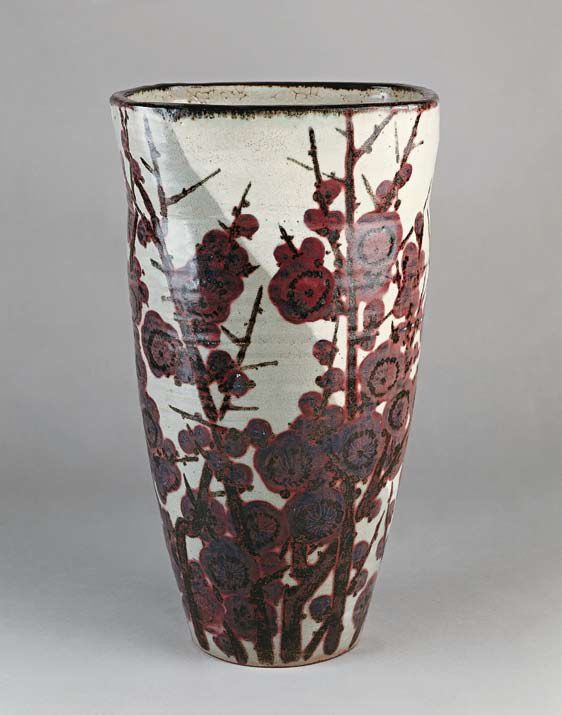
Vase (kabin)
Grès, Engobe
Vase
H. 38.5 x D. 23 cm
M.C. 8752
Don manuel, Kiyomizu, Rokubei, VI
Rokubei VI prit le nom et la suite de la lignée familiale en 1945, succédant à son père Kiyomizu Rokubei V dit Rokuwa (1874-1959).
Rokubei VI succeeded his father, Kiyomizu Rokubei V (1874-1959), known as Rokuwa, and inherited the family headship in 1945.
This vase was loaned by the artist for an exhibition held at the Cernuschi Museum and then at the Vallauris museum in 1950. In the exhibition catalogue, Rokubei VI appears in the section “Ceramists of the official school”, after Itaya Hazan, considered the “doyen of the ceramists of the official school”, and Kiyomizu Rokuwa. The text lists the numerous honours and awards won by the artist: “Pupil of the Kyōto School of Painting. Has shown work at the National Exhibition [Nitten] since 1927. Two grands prix. Jury member. Member of the ‘Ceramists’ Club of Kyōto’”. It goes on to explain that the technique of this vase is “traditional in the Rokubei family.” The influence of the Mingei movement, whose most famous representatives were Hamada Shōji (1894-1978) and the Englishman Bernard Leach (1887-1979), is perceptible, even though Hamada Shōji is listed in a different section, that of the “renovation movement of the popular arts”, between Kawai Kanjirō (1890-1966) and Funaki Michitada (1900-1963).
In 1961, Rokubei VI took part in the “Exposition d'Œuvres de Céramistes Contemporains de Kyōto à la Manufacture Nationale de Sèvres” ("Exhibition of Works by Contemporary Ceramists from Kyoto at the Sèvres National Porcelain Manufactory”) The catalogue entry introduces him thus: “He perpetuates the ceramic tradition of Kyōto while modernising it. He has executed many works in coloured varnish (green, yellow and blue) and is today experimenting with ceramics in the primitive sense”.